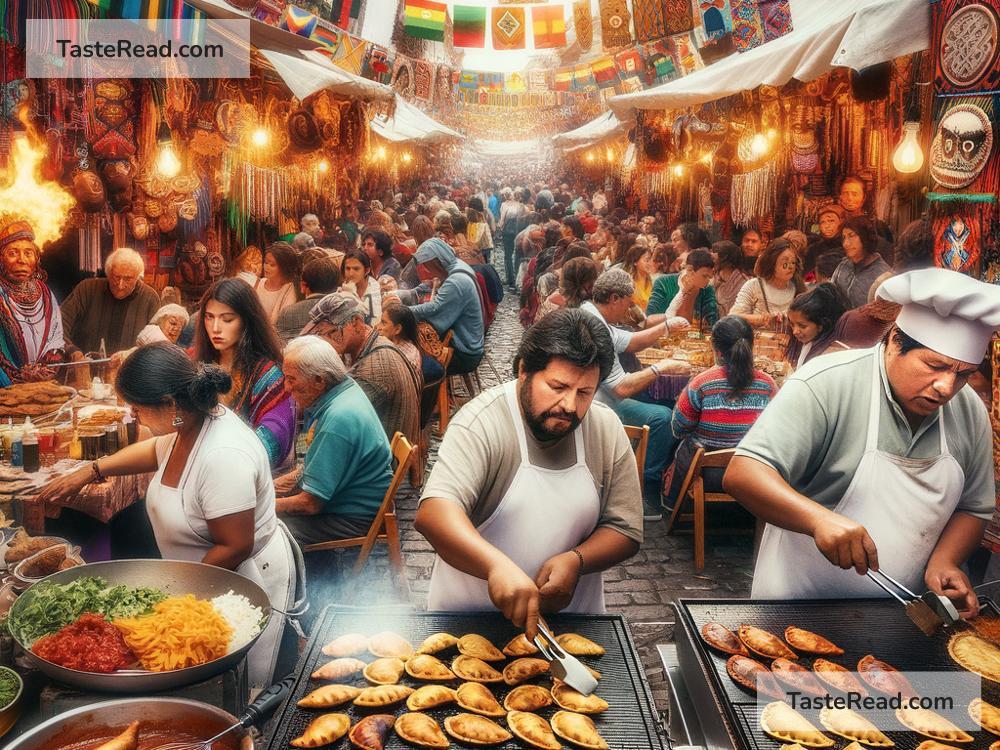Journeying Through South American Empanada Street Markets
If you love food, adventure, and discovering new cultures, South America is calling your name! One of the best ways to explore this vibrant continent is through its street food, and among these never-ending delights is the humble yet divine empanada. These flavorful pockets of dough, filled with tasty ingredients, are a must-try for every traveler. As you move from Argentina to Colombia or Chile to Venezuela, you’ll find that empanadas differ from place to place—they are a reflection of each country’s unique cuisine and culture.
Let’s go on a flavorful journey through South American street markets, where empanadas are the shining stars.
What Is an Empanada?
An empanada is a hand-held pastry that can be baked or fried. Imagine a dough that is shaped like a half-moon, stuffed with savory or sweet fillings, and cooked to perfection! Empanadas are easy to carry, delicious, and inexpensive, which is why they are a favorite snack or meal for locals and travelers alike.
The fillings can vary greatly depending on the country. From meats, cheeses, and vegetables to unique combinations like eggs, olives, and even fruits, there is an empanada for everyone. South American street markets are the perfect places to try them because they really showcase the diversity of this beloved treat.
Argentina: The Land of Savory Empanadas
Argentina is famous for its empanadas. In street markets around Buenos Aires, Salta, and Mendoza, you’ll find empanadas filled with beef, chicken, or ham and cheese. What makes Argentine empanadas special is the seasoning—cumin, paprika, and other spices add rich flavors to every bite.
Empanadas in Argentina differ depending on the region. For example, empanadas salteñas from Salta are slightly smaller but packed with bold flavors, while empanadas from Mendoza often include raisins for a sweet twist. In Buenos Aires, the empanadas may lean toward simplicity but are no less delicious.
Walking through Argentina’s street markets, you’ll see stalls offering empanadas freshly baked in wood-fired ovens. Pair them with a glass of Malbec wine or a sip of yerba mate, and you have an authentic Argentine experience.
Colombia: A Crispy, Corn-Based Delight
When you visit Colombia, the empanada adventure takes a slightly different turn. Here, empanadas are typically made with cornmeal dough and fried to golden perfection. They’re crispy on the outside and bursting with flavor on the inside. Filled with spiced beef, chicken, or potatoes, Colombian empanadas are served with a side of aji, a spicy salsa that adds extra zing to every bite.
In cities like Bogotá and Medellín, street market stalls selling empanadas are always busy. Locals and visitors stop to grab a quick bite in between shopping or sightseeing. If you’re lucky, some vendors will offer empanadas with unique fillings like shrimp or cheese, giving you even more reasons to indulge.
Chile: Simple Yet Comforting
In Chile, empanadas are larger and heartier, often enjoyed during festivals and holidays but also as an everyday street food. The most famous variety is the empanada de pino, filled with ground beef, onions, hard-boiled eggs, olives, and sometimes raisins. The combination of sweet and savory flavors is a Chilean specialty.
One thing you’ll love about empanadas in Chile is how comforting they feel. They are often baked in ovens until golden brown, which gives them a softer texture compared to their fried cousins. In street markets across Santiago, Valparaíso, and other cities, you’ll spot vendors proudly offering warm empanadas wrapped in paper for shoppers on the go.
Venezuela: Sweet Meets Savory
In Venezuela, empanadas are made with cornmeal dough, similar to Colombia. However, the fillings are where things get exciting. Venezuelan street market empanadas often include shredded beef, black beans, and cheese. Sometimes, you’ll find empanadas with a sweeter twist, filled with plantains or even tropical fruits. Whether you prefer salty or sweet, Venezuela has empanadas that cater to both cravings.
In coastal cities like Maracaibo, you might find seafood empanadas featuring crab or fish, bringing a taste of the ocean into the mix. Whatever the filling, Venezuelan empanadas are always a treat, and they pair perfectly with a refreshing drink like papelón con limón, a sweet lemon and raw sugar juice.
Why Explore Empanada Street Markets?
Street markets are more than just places to eat. They’re lively spaces where you can feel the pulse of the local culture. Vendors chat with passersby, scents of sizzling dough fill the air, and colorful stalls invite curious food lovers to come and explore. Trying empanadas at a street market is a chance to connect with the people and traditions of South America.
Empanadas also teach us about history. The word “empanada” comes from the Spanish verb empanar, meaning “to bread” or “wrap in dough.” Empanadas originated in Spain and spread to Latin America during colonial times, but each country has since turned them into its own cultural treasure.
Tips for Your Empanada Journey
- Be adventurous: Try empanadas with unique fillings you’ve never tasted before.
- Ask the locals: Vendors can tell you which empanadas are the best in the area.
- Pair them with local drinks: From Malbec wine in Argentina to tropical juices in Venezuela, beverages enhance the experience.
- Try both baked and fried: Each cooking method offers a different texture and flavor.
Conclusion
South American empanadas are more than just food—they’re small bites of culture, history, and joy. Exploring street markets in countries like Argentina, Colombia, Chile, and Venezuela is the best way to savor these tasty treats while soaking in the vibrant atmosphere.
So pack your bags, bring your appetite, and get ready for a delicious journey through South America’s empanada street markets. Who knows? You might just find your new favorite snack!


